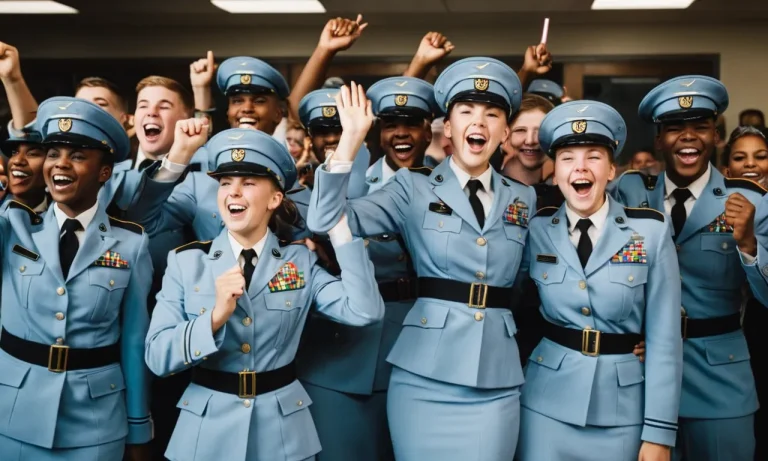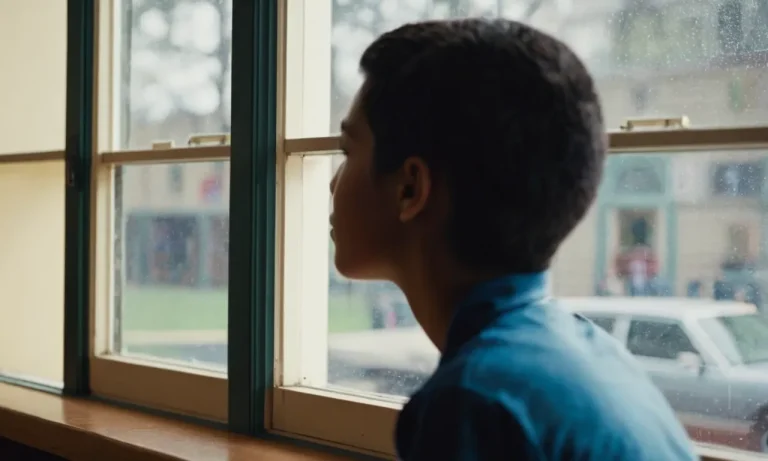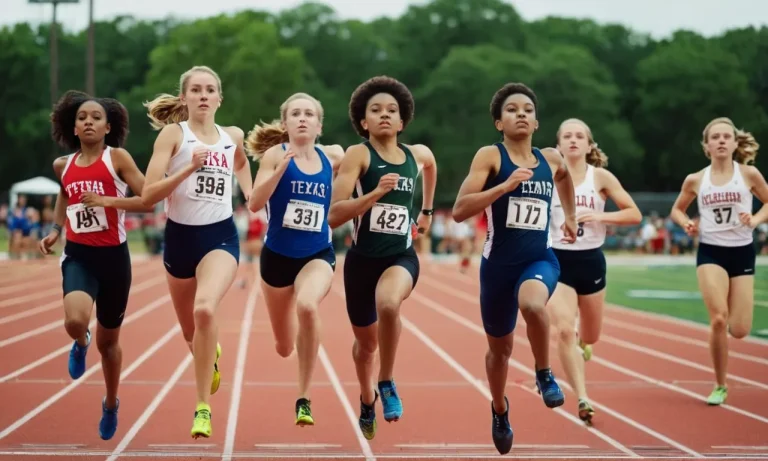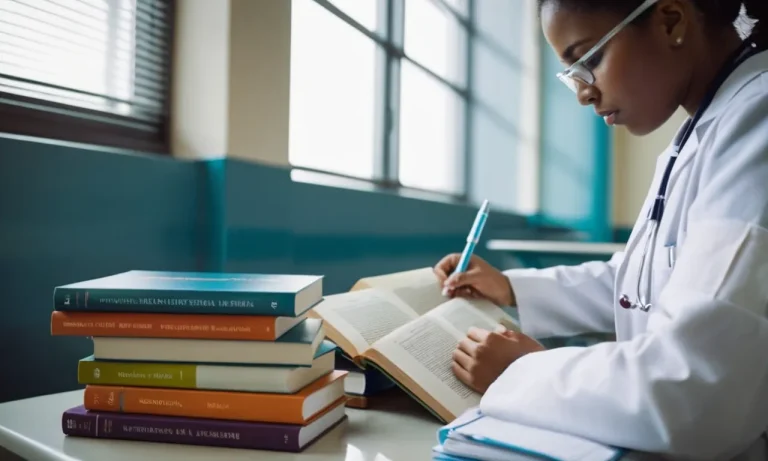Choosing the right educational path for your child is one of the most crucial decisions a parent can make. The debate between private and public schools has been ongoing for decades, with each option offering its own set of advantages and disadvantages.
If you’re short on time, here’s a quick answer to your question: Private schools typically offer smaller class sizes, a more rigorous curriculum, and additional extracurricular activities, but come with a higher tuition cost.
Public schools, on the other hand, are funded by taxpayer dollars and are generally more diverse, but may have larger class sizes and fewer resources.
In this comprehensive guide, we’ll delve into the key differences between private and public schools, exploring factors such as curriculum, class size, resources, extracurricular activities, and cost.
By the end, you’ll have a better understanding of which option aligns best with your child’s needs and your family’s priorities.
Curriculum and Academic Standards
Private School Curriculum
Private schools have the freedom to design their own curriculum, allowing them to tailor educational programs to their specific values, teaching philosophies, and student needs. This flexibility often results in a more personalized and innovative approach to learning.
Many private schools offer specialized programs, such as STEM (Science, Technology, Engineering, and Mathematics), arts, or language immersion. They can also adapt their curriculum to accommodate different learning styles and paces, ensuring that each student receives the support they need to thrive academically.
Private schools are not bound by state or federal curriculum requirements, giving them the autonomy to explore diverse subjects and teaching methods. According to the National Center for Education Statistics, 😊 around 10% of all K-12 students in the United States attend private schools.
Public School Curriculum
Public schools, on the other hand, follow a standardized curriculum established by state and federal education agencies. This ensures consistency and adherence to educational standards across public schools within a state or region.
The curriculum is designed to meet specific learning objectives and prepare students for standardized tests. While this approach promotes uniformity, it can sometimes limit flexibility and innovation in teaching methods.
However, many public schools strive to offer enrichment programs, electives, and extracurricular activities to complement the core curriculum and cater to diverse student interests and talents. Additionally, public schools are required to follow guidelines for special education and accommodations for students with disabilities, ensuring equal access to education for all students.
Standardized Testing and College Preparation
Both private and public schools place a strong emphasis on preparing students for standardized tests, such as the SAT or ACT, as these exams play a crucial role in college admissions. However, the approach to test preparation can vary.
Private schools may have more flexibility in tailoring their curriculum and teaching methods to align with these tests, while public schools often dedicate specific classes or programs to test preparation.
When it comes to college preparation, private schools often boast impressive college acceptance rates and may offer specialized counseling services to guide students through the application process. Public schools, on the other hand, typically have larger student populations and may have fewer resources dedicated to individualized college counseling. That being said, many public schools have dedicated college counselors and offer advanced placement (AP) or International Baccalaureate (IB) courses to challenge academically talented students and enhance their college readiness.
Ultimately, both private and public schools aim to provide a quality education and prepare students for future academic pursuits. The choice between the two often comes down to factors such as educational philosophy, curriculum flexibility, student-teacher ratios, and available resources.
👏 It’s essential for parents and students to carefully consider their specific needs and preferences when deciding between a private or public school education.
Class Size and Student-Teacher Ratio
One of the most significant differences between private and public schools lies in their class sizes and student-teacher ratios. These factors play a crucial role in shaping the learning environment and can significantly impact a student’s academic journey.
So, let’s dive into the details and explore how class sizes and student-teacher ratios vary between these two educational settings.
Private School Class Sizes
Private schools are known for their smaller class sizes, often capping enrollment at around 15-20 students per class. This intentional limit allows teachers to provide more personalized attention and tailor their teaching methods to individual student needs.
Smaller classes foster a more interactive and engaging learning environment, enabling students to ask questions freely and receive focused guidance from their instructors. According to a study by the National Center for Education Statistics, the average student-teacher ratio in private schools is approximately 12:1, a stark contrast to public schools.
Public School Class Sizes
In contrast, public schools typically have larger class sizes due to budgetary constraints and higher enrollment numbers. It’s not uncommon to find classes with 25-30 students or more, especially in urban areas with higher population densities.
While some public schools may strive to maintain smaller class sizes, the reality is that they often face resource limitations and staffing challenges. According to data from the National Center for Education Statistics, the average student-teacher ratio in public schools is around 16:1, but this can vary significantly based on location and funding.
Impact on Student Learning and Engagement
The differences in class sizes and student-teacher ratios between private and public schools can have a profound impact on student learning and engagement. Smaller classes in private schools allow for more personalized attention, fostering a supportive environment where students can thrive.
Teachers have the opportunity to identify and address individual learning needs, provide targeted feedback, and encourage active participation. This can lead to increased academic achievement, improved critical thinking skills, and a deeper understanding of the subject matter.
On the other hand, larger class sizes in public schools can present challenges for both teachers and students. With more students vying for the teacher’s attention, it can be difficult to provide the same level of individualized support.
Teachers may struggle to effectively manage classroom dynamics, address diverse learning styles, and ensure that every student receives the attention they need. Consequently, some students may feel overlooked or disengaged, potentially hindering their academic progress.
| Aspect | Private Schools | Public Schools |
|---|---|---|
| Average Class Size | 15-20 students | 25-30 students (or more) |
| Student-Teacher Ratio | 12:1 | 16:1 |
Ultimately, the choice between a private or public school should be based on a holistic evaluation of each institution’s offerings and a family’s specific needs and priorities.
Resources and Facilities
Private School Resources
Private schools are renowned for their abundant resources and top-notch facilities. With tuition fees often higher than public schools, private institutions can allocate substantial funds towards providing state-of-the-art classrooms, well-stocked libraries, cutting-edge technology, and a wide range of extracurricular activities.
According to a National Center for Education Statistics report, the average student expenditure in private schools was $13,550 in 2017-18, significantly higher than public schools. 🤑💰
This financial advantage translates into smaller class sizes, personalized attention, and access to specialized resources tailored to each student’s needs. Private schools often boast modern science labs, art studios, music rooms, and athletic facilities that rival those of colleges.
They can afford to invest in the latest educational tools and hire highly qualified teachers, creating an environment conducive to academic excellence. 👩🏫👨🔬
Public School Resources
Public schools, on the other hand, rely primarily on government funding and local property taxes, which can vary significantly based on the district’s socioeconomic status. While some public schools in affluent areas may have access to substantial resources, others in less wealthy neighborhoods often face budget constraints.
According to Education Week, high-poverty districts spend an average of $1,000 less per student than low-poverty districts. 😔
Despite these challenges, many public schools strive to provide a quality education with the resources available. They may have to be more creative and resourceful in their approach, relying on community support, grants, and fundraising efforts to supplement their budgets.
However, the facilities and resources in public schools can vary widely, with some offering excellent programs and facilities while others struggle to meet basic needs. 💪
Technology Integration and Extracurricular Opportunities
Both private and public schools recognize the importance of technology integration in the modern educational landscape. Private schools often have an edge in this area, with the financial means to invest in the latest hardware, software, and digital learning tools.
They can provide students with access to cutting-edge technologies, such as interactive whiteboards, virtual reality simulations, and online learning platforms. 💻🖥️
In terms of extracurricular activities, private schools typically offer a broader range of options, including specialized clubs, sports teams, and enrichment programs. These opportunities not only enhance students’ overall development but also provide avenues for exploring diverse interests and talents.
Public schools, while sometimes limited in their extracurricular offerings, may collaborate with community organizations or rely on dedicated teachers and parent volunteers to facilitate various activities. 🏆🎭🎸
Ultimately, the resources and facilities available in private and public schools can vary significantly. While private schools often have a financial advantage, allowing them to provide more extensive resources and amenities, public schools strive to make the most of their available resources and engage community support to offer quality educational experiences for their students.
Choosing the right school often comes down to individual priorities, budgets, and the specific needs of each student. 🤔
Cost and Affordability
One of the most significant differences between private and public schools lies in the cost and affordability. 😊 While public schools are funded primarily through tax dollars and are generally free to attend, private schools rely heavily on tuition fees paid by students’ families.
This financial aspect can have a profound impact on accessibility and the overall educational experience.
Private School Tuition and Fees
Private school tuition can vary widely, ranging from a few thousand dollars to over $50,000 per year, depending on the institution’s reputation, location, and offered programs. According to the National Center for Education Statistics, the average tuition for private elementary schools in the United States was around $11,000 for the 2021-2022 academic year, while private high schools averaged over $16,000. In addition to tuition, many private schools also charge additional fees for activities, textbooks, transportation, and other services.
Public School Funding and Costs
Public schools, on the other hand, are primarily funded through state and local taxes, as well as federal government grants. While attending a public school is generally free, there may be some costs associated with extracurricular activities, field trips, or specialized programs.
However, these costs are typically lower compared to private school expenses. According to the U.S. Department of Education, the average per-pupil spending in public elementary and secondary schools was around $13,000 for the 2019-2020 school year.
Financial Aid and Scholarship Opportunities
- Private schools often offer financial aid and scholarship opportunities to make education more accessible to families with limited financial resources. These can include need-based aid, merit-based scholarships, and other forms of assistance.
- Public schools may also offer scholarships or fee waivers for specific programs or activities, but these opportunities are generally more limited compared to private schools.
- It’s important to research and explore all available financial aid and scholarship options when considering both private and public school options. Resources like StudentAid.gov and FastWeb.com can provide valuable information on funding opportunities.
While the cost of education is a significant factor, it’s essential to weigh it against the educational quality, resources, and overall fit for your child’s needs. Both private and public schools can offer excellent educational opportunities, and the decision ultimately depends on your priorities, values, and financial circumstances.
👍
Conclusion
Choosing between a private or public school education is a highly personal decision that requires careful consideration of your child’s needs, your family’s values, and your financial situation. While private schools often offer smaller class sizes, a more rigorous curriculum, and additional resources, public schools provide a diverse learning environment and are accessible to all students, regardless of socioeconomic status.
Ultimately, the decision should be based on a thorough evaluation of the specific schools in your area, their academic performance, extracurricular offerings, and overall fit for your child. By weighing the pros and cons of each option, you can make an informed choice that sets your child on the path to success, both academically and personally.






